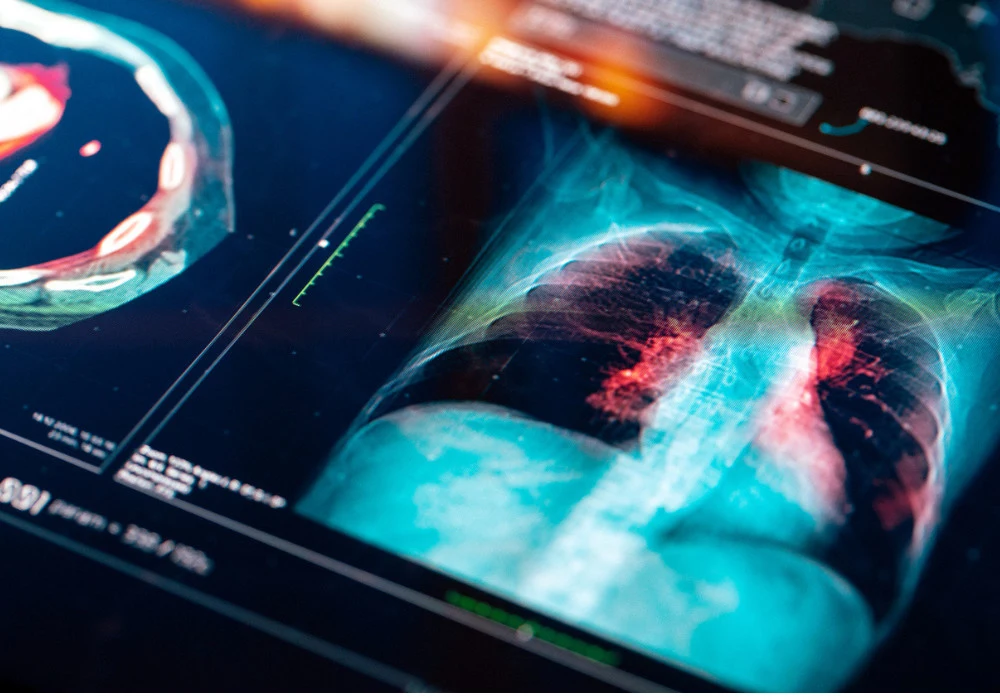Lung cancer remains a leading cause of cancer-related mortality globally, with non-small cell lung cancer (NSCLC) being the most prevalent subtype. Radiotherapy, often combined with chemotherapy, is a cornerstone of treatment for NSCLC. However, the challenge of accurately evaluating the biological response to therapy persists. While effective at measuring tumour size, traditional imaging techniques often fail to capture early microenvironmental changes that could indicate treatment efficacy. Dynamic contrast-enhanced magnetic resonance imaging (DCE-MRI) has emerged as a powerful tool to assess these changes. This article explores the significance of measuring the repeatability of DCE-MRI biomarkers in improving the evaluation of biological responses to radiotherapy in NSCLC.
The Role of DCE-MRI in Lung Cancer Treatment
Dynamic contrast-enhanced MRI (DCE-MRI) offers a non-invasive method to visualize and quantify changes in tumour perfusion and permeability, providing valuable insights into the tumour microenvironment. These imaging biomarkers, such as the volume transfer constant (Ktrans), extravascular extracellular space volume fraction (ve), and plasma volume fraction (vp), help in understanding how tumours respond to therapy at a biological level. In NSCLC, where early detection of therapeutic response can significantly impact patient outcomes, DCE-MRI holds the promise of personalized treatment strategies. By identifying early responders and non-responders, clinicians can tailor radiotherapy and adjunct treatments more effectively, potentially improving survival rates and reducing unnecessary side effects.
Importance of Biomarker Repeatability in DCE-MRI
One of the critical challenges in integrating DCE-MRI into clinical practice is ensuring the repeatability and reliability of the biomarkers. Repeatability refers to the consistency of measurements under the same conditions, and it is essential for determining whether observed changes are due to therapy or merely variations in measurement. The study conducted on NSCLC patients undergoing radiotherapy revealed that specific biomarkers, such as Ktrans and tumour volume, exhibited high repeatability, making them reliable indicators of early biological response. However, other biomarkers, like vp, showed significant variability, highlighting the need to carefully select parameters in clinical applications. Understanding the repeatability of these biomarkers is crucial for their successful implementation in routine clinical practice and for the design of future studies.
Cohort-Level vs. Individual Lesion Analysis
While cohort-level analysis provides an overview of treatment effects across a population, it may not capture the nuances of individual patient responses. The study demonstrated that clinicians could identify which individual lesions exhibited significant changes in response to therapy by evaluating the repeatability of DCE-MRI biomarkers. For instance, while cohort-level changes were observed in biomarkers like Ktrans and ve, not all lesions within the same patient showed fundamental changes. This lesion-specific analysis allows for a more personalised approach to treatment, as it identifies which areas of the tumour are responding to therapy and which are not. Such insights can guide clinicians in adjusting treatment plans, potentially improving outcomes for patients with heterogeneous tumour responses.
Conclusion
Integrating DCE-MRI biomarker repeatability into evaluating lung cancer radiotherapy responses represents a significant advancement in personalised cancer treatment. By ensuring the reliability of imaging biomarkers, clinicians can more accurately assess early biological responses, leading to better-informed treatment decisions. This approach not only enhances the precision of radiotherapy but also opens the door to more targeted therapeutic interventions. As research continues to refine these biomarkers and validate their clinical utility, DCE-MRI has the potential to become a standard tool in the management of NSCLC, ultimately improving patient outcomes and advancing the field of oncological imaging.
Source Credit: European Radiology
Image Credit: iStock






